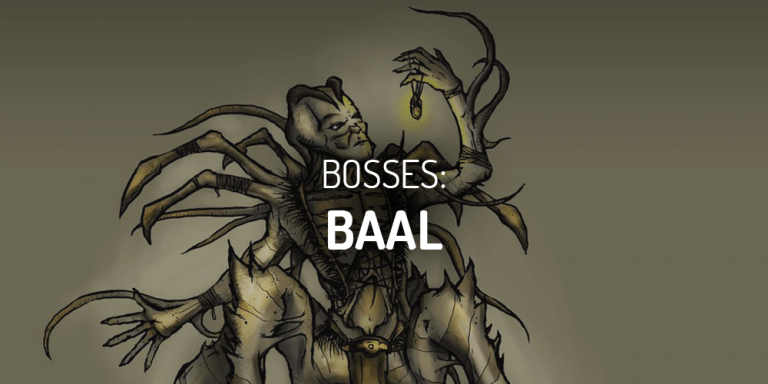How to deal with The Lord of Destruction at the end of Act 5
Baal is the 5th Act’s final boss and you can encounter him at the end of the Throne of Destruction level. There, you can find a portal that leads to the Worldstone Chamber.
His actual name is Tor’Baalos and he is also known as the Lord Of Destruction, which indicates the name of the game’s expansion (Diablo 2: Lord of Destruction). He is one of the three Prime Evils.
When you defeat him in Normal difficulty, you will unlock the Nightmare mode. Defeating him in the Nightmare difficulty will grant you access to the Hell difficulty. Also, you have to kill Baal in order to unlock the Secret Cow level.

The Lord of Destruction is the most reckless and impudent of the three Brothers. The early existence of Baal was similar to that of his brothers, Mephisto and Diablo. It was an endless battle against Heaven’s forces. Baal never gave up, mostly because he hadn’t exhausted all the possibilities for excessive destruction.
After the events of the Dark Exile, the Horadrim managed to contain his essence inside a soulstone and they placed it in the Tal Rasha’s Tomb. Some centuries later, Diablo managed to free Baal. Then, the Lord of Destruction corrupted the Wolrdstone and the Barbarians that lived close to Mount Arreat suffered some devastating effects. However, a team of brave heroes defeated Baal and prevented his plans.
The Lord of Destruction’s essence ended up inside the Black Soulstone, due to Adria’s machinations. Her intention was to merge Baal into Diablo to form a single Prime Evil. In contrast to her plan, a new hero defeated and the Prime Evils were captured back into the Black Soulstone. Later, Malthael destroyed the artifact in an attempt to defeat Tyrael, but this wasn’t enough. The Lord of Terror was freed though, containing the essences of all other Evils.
During the events of the Dark Exile, the four Lesser Evils banished the Prime Evils to the mortal realm. They spread chaos over the East for many years, but the Order of the Horadrim hunted them down.
The Horadrim utilized some artifacts (the soulstones) in order to contain the spirits of Baal, Mephisto, and Diablo. The Lord of Terror managed to escape to the West. However, the Horadrim found Diablo and contained his essence inside a soulstone. They buried the stone beneath an ancient Cathedral. There, Diablo waits for the right time for his revival.
Before the final battle, Baal summons groups of minions from each Act that you have to kill first. Once you slay all the five groups, the Lord of Destruction will go inside the Worldstone Chamber, where the final encounter will take place.
Baal is the toughest Boss in the game and he has a wide variety of deadly abilities in his arsenal:
The Lord of Destruction is the hardest Boss in the game, so gather a lot of healing and mana potions and prepare to return many times to the Town for a refill.
He uses a combination of cold, fire and some lightning attacks. Therefore, you should have a high amount of resistances, especially fire resistance. Damage reduction effects can be very helpful as well.
The most effective strategy for defeating Baal is probably the use of cold spells and weapons. The fight can be a lot easier if you keep slowing the Boss. For this reason, you can hire a mercenary like the Act 3 Cold hireling that utilizes cold attacks such as the Freezing Arrow.
In the case you are playing with a melee class, another helpful trick is to attack the tentacles of Baal (when he summons them) in order to leech a lot of health points.
If it seems impossible to slay Baal or if he keeps killing you with a single attack, you should consider gaining some more levels. Maybe you have to upgrade your equipment as well, especially your armor and your resistances.
